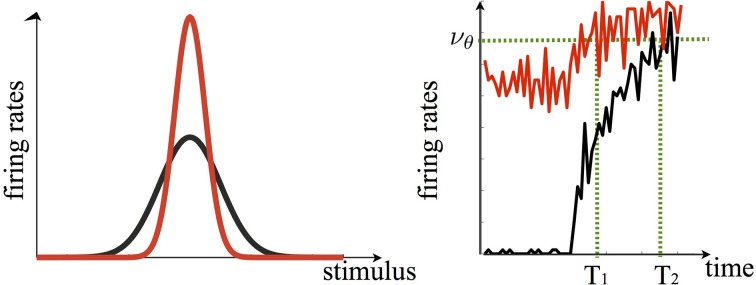Figure 3.

In our model persistent delay activity is instrumental to both the suppression of activity of cells less selective to the sample and the enhancement of activity of those most selective to it. In this framework, the tuning curve of a given cell upon stimulus repetition is sharpened (red curve, left panel). Note that in the original sharpening model the response to the cell's preferred stimulus would not change upon repetition, i.e., the peaks of the red and black curve would overlap. The enhanced sharpening stems from persistent delay activity. The right panel shows how, following the sample offset, the population of cells which are mostly selective to it continues to fire persistently during the delay period (red curve to the left of the black dashed line, which indicates stimulus onset). Upon sample repetition, the population activity, starting off from a higher level with respect to the first presentation (black curve), ramps up faster–yielding the repetition enhancement effect- eventually reaching a recognition threshold (νθ) faster (T1 < T2). Curves are generated via the spiking neuron simulation in Tartaglia et al., (in press).
